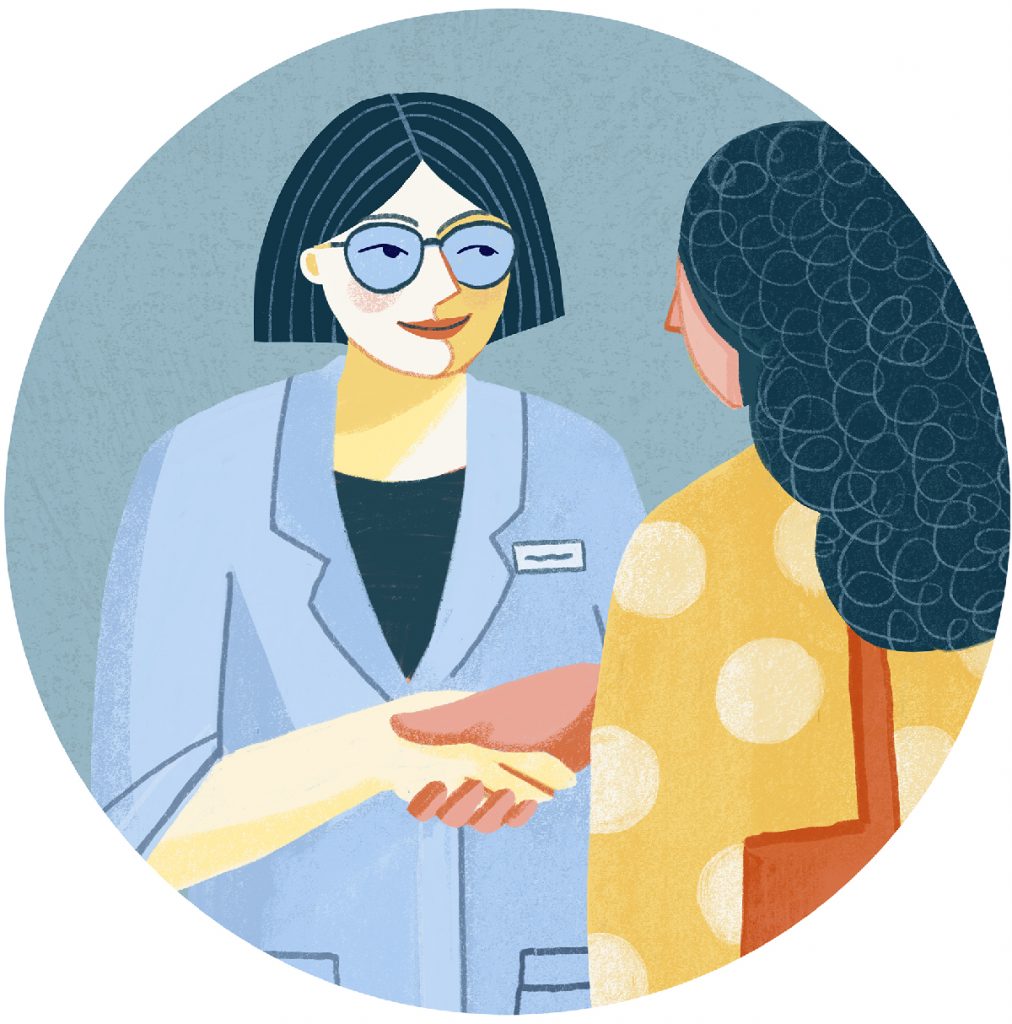Bedside manner
You never have a second chance to make a good first impression

Maryalicia Post
Published: Thursday, January 30, 2020
 Time was when a good bedside manner was something a physician had or didn’t have, like a great smile or a firm handshake. Doctors equipped with natural charisma were assured of a loyal band of patients. Others settled for grudging respect. Today ‘bedside manner’ has morphed into ‘patient-physician communication ‘. It is no longer an optional extra, nor is it restricted to the bedside. As technology plays an ever-greater part in practices such as ophthalmology, the need for the human interface becomes ever more evident.
The concept of the bedside manner’ dates back to the late 19th Century, when a Dr Osler brought trainee doctors into the hospital to see and talk to patients – and the system of ‘internship’ was born. Ever since, patients have come to expect good communication with their doctors. And they’re right to do so. Research confirms that a good bedside manner measurably affects outcome.
Unhappily, this need goes hand in hand with more pressure on the physician for the finite amount of time he or she has available to spend with each patient. In one disastrous attempt to bridge the gap, a California hospital made video recordings to be played to the patient in place of an ‘evening round’ by the doctor. As a result, one patient was reminded via a video recording that he was past medical help. The patient died the next day but family members who were in the room when the video played never forgot the shock. (The hospital apologised.)
And here’s an account of one patient’s experience with an ophthalmologist. The doctor’s excitement at discovering that his patient had a very rare condition coupled with his enthusiasm for sharing the discovery with his staff made him forget he was dealing with a human being and a very vulnerable human being at that.
While the ophthalmologist’s practice may not focus on literal ‘bedside’ scenarios, the need to reassure and connect with patients is as compelling as in any other practice. In his popular blog, Dr Ron Rosa OD offers specific suggestions for the ophthalmologist to consider. They range from the surprising – “Beware of your posture” – to the challenging – “never stop caring”. More generalised tips are here.
Perhaps the most useful thing to keep in mind is that you never have a second chance to make a good first impression. Get the patient’s name right, call them by their last name plus Mr or Mrs (unless they are under 18 or you’re invited to use their first name). Look interested. Don’t retreat behind a screen more than necessary. And remember that a sincere smile and a welcoming handshake still set the tone for a successful ‘bedside manner’.
Time was when a good bedside manner was something a physician had or didn’t have, like a great smile or a firm handshake. Doctors equipped with natural charisma were assured of a loyal band of patients. Others settled for grudging respect. Today ‘bedside manner’ has morphed into ‘patient-physician communication ‘. It is no longer an optional extra, nor is it restricted to the bedside. As technology plays an ever-greater part in practices such as ophthalmology, the need for the human interface becomes ever more evident.
The concept of the bedside manner’ dates back to the late 19th Century, when a Dr Osler brought trainee doctors into the hospital to see and talk to patients – and the system of ‘internship’ was born. Ever since, patients have come to expect good communication with their doctors. And they’re right to do so. Research confirms that a good bedside manner measurably affects outcome.
Unhappily, this need goes hand in hand with more pressure on the physician for the finite amount of time he or she has available to spend with each patient. In one disastrous attempt to bridge the gap, a California hospital made video recordings to be played to the patient in place of an ‘evening round’ by the doctor. As a result, one patient was reminded via a video recording that he was past medical help. The patient died the next day but family members who were in the room when the video played never forgot the shock. (The hospital apologised.)
And here’s an account of one patient’s experience with an ophthalmologist. The doctor’s excitement at discovering that his patient had a very rare condition coupled with his enthusiasm for sharing the discovery with his staff made him forget he was dealing with a human being and a very vulnerable human being at that.
While the ophthalmologist’s practice may not focus on literal ‘bedside’ scenarios, the need to reassure and connect with patients is as compelling as in any other practice. In his popular blog, Dr Ron Rosa OD offers specific suggestions for the ophthalmologist to consider. They range from the surprising – “Beware of your posture” – to the challenging – “never stop caring”. More generalised tips are here.
Perhaps the most useful thing to keep in mind is that you never have a second chance to make a good first impression. Get the patient’s name right, call them by their last name plus Mr or Mrs (unless they are under 18 or you’re invited to use their first name). Look interested. Don’t retreat behind a screen more than necessary. And remember that a sincere smile and a welcoming handshake still set the tone for a successful ‘bedside manner’.